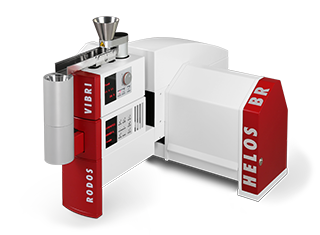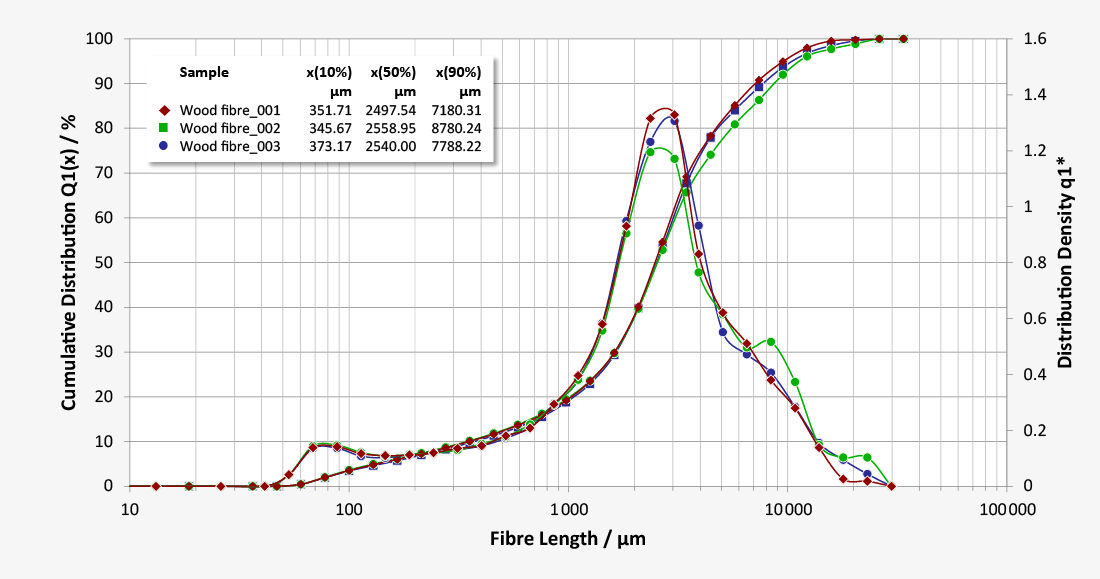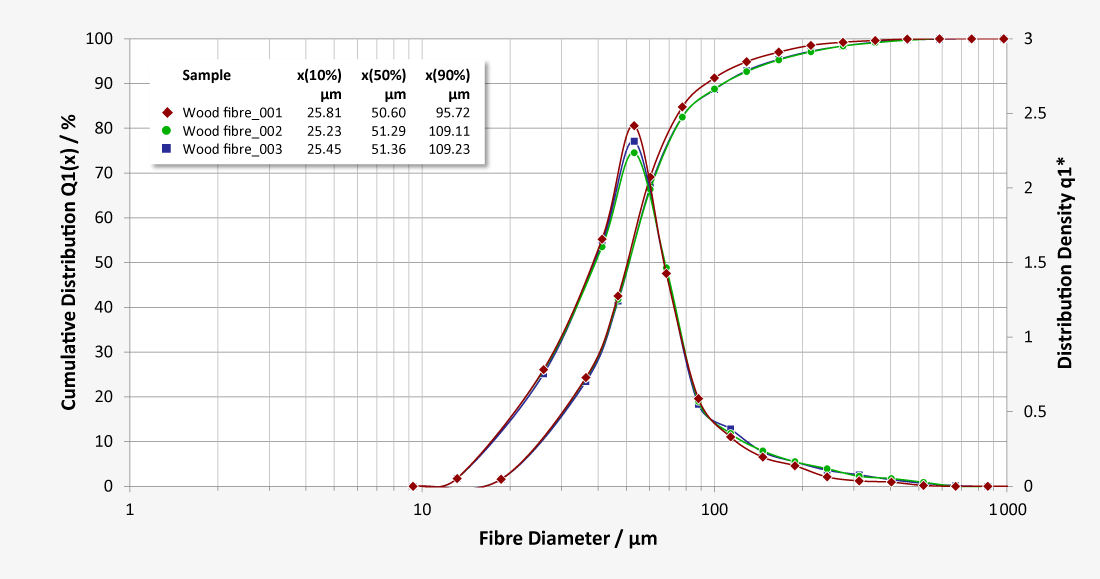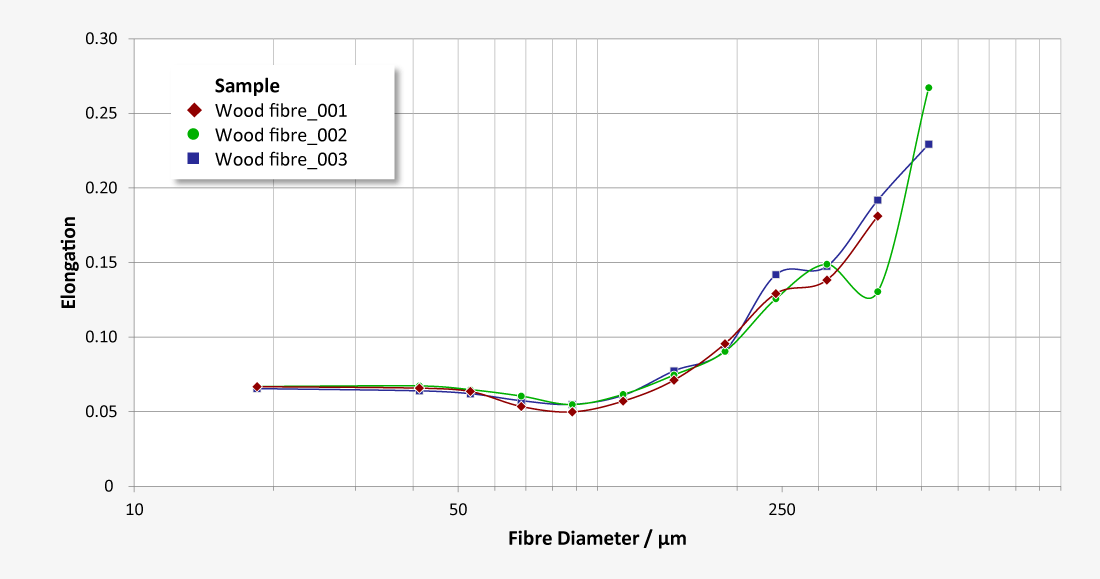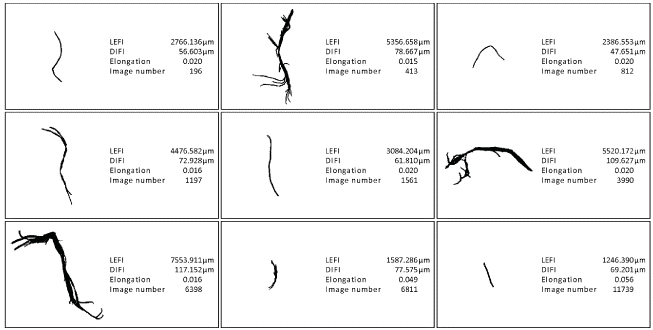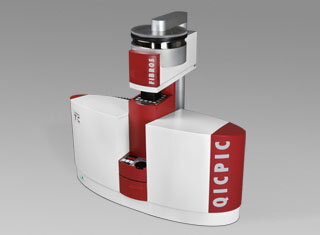Meaningful results for fibre length and fibre diameter of wood fibres by image analysis
Wood fibres are mainly used for the production of medium density fibreboards (MDF). They are used as building material and insulation material in order to regulate the temperature and climate, as well as to provide noise protection. Wood chips and shavings are crushed in the production of MDF or insulation boards and are carefully ground to a precisely defined fibre length because this influences the product quality, e.g. the elasticity and the thermal conductivity of the insulation material. Other influencing factors include the slenderness ratio (ratio of fibre length to fibre thickness) and the dust content, which in turn determine the strength of the boards and their flexural strength.
The fibre quality must be assessed before further processing in order to ensure the quality of MDF manufacturing. Dynamic image analysis with QICPIC and the FIBROS disperser, which was specially developed for fibres, are ideally suited for dispersing wood fibres within a few minutes and analysing each fibre individually with regard to length and thickness. The results can be represented as size distributions of the length or thickness of the fibres and as shape distributions, for example in terms of elongation (ratio of fibre width to fibre length). A particle gallery also provides qualitative information about the shape of the fibres.
Distribution of the elongation shape parameter
Elongation, in particular, is a useful descriptive shape parameter for fibres that illustrates the ratio of fibre thickness to fibre length and can assume values between 0 and 1. High values close to 1 indicate compact fibres and low values near to 0 indicate long fibres.
- Fast, repeatable and reproducible analysis of fibre length
- Direct calculation of fibre length
- Sample dispersion adjusted to production process | wet or dry
- Results independent of raw material
Download application notes for detailed information
Are you interested in additional content? Please register an account. After confirming the registration link brochures, application notes and other documents on particle measurement will be available for download.
Application strengths
- Reproducible results within a short time
- Low sample preparation effort
- Optimum dispersion, also intertwined fibres
- High statistical reliability
- Very good repeatability | comparability
- No influence by the operator
- Can be adapted for various fibre collections with different screening inserts and cards
Customer benefits
- Time savings compared to previous microscopic measurement with manual dispersion
- No user-dependent results
- High statistical significance due to several thousand individual fibres per analysis
- Less faulty production
- Disperse particle systems with desired, controlled properties






